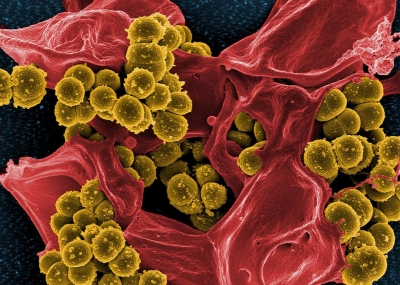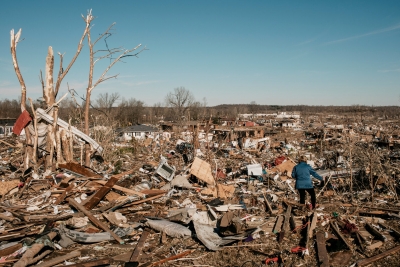How did MRSA become a superbug?

Superbugs are bacteria that have acquired resistance to several types of antibiotic drugs either through genetic mutation or through build up of resistance over time chiefly due to the misuse or overuse of antibiotics. This means that certain antibiotics which have saved millions of lives earlier will no longer be effective against such bacteria. Scientists call them drug-resistant bacteria or antibiotic-resistant bacteria and they are posing a significant health threat globally today.
Scientists discovered one such superbug called the MRSA (or methicillin-resistant staphylococcus aureus) in 2011. It was thought to have emerged in cows given the large amounts of antibiotics used among cattle. However, a team of international researchers have found that drug-resistant bacteria MRSA evolved naturally about 200 years ago as a result of a battle between a parasitic fungus species and a bacteria species that share space on the skin of wild hedgehogs While the use of antibiotics often drives the evolution of superbugs, this study shows the origins of some antibiotic-resistant bacteria in Nature.
How did the superbug evolve on hedgehog?
Researchers found two kinds of organisms living on the skin of European hedgehogs. They were the superbug Staphylococcus aureus and the parasitic fungus Erinaceus europaeus. The fungus secretes the antibiotic methicillin (a form of penicillin), which inhibits the growth of Staphylococcus aureus to increase its chance of survival. The bacteria, in turn, evolved antibiotic resistance to outsmart their fungal rivals and thrive on their hedgehog hosts. Researchers believe that this particular strain of bacteria that colonised the hedgehogs, known as mecC-MRSA, might have found its way their livestock and eventually to humans.
What's more?
The team sequenced the genomes of the fungus on the hedgehogs and found the genes responsible for producing the antibiotics and then they sequenced the bacteria. Through genetic coding, researchers were able to establish a timeline of the evolution of the hedgehog-borne mecC-MRS. They found that the bacteria had resistance to methicillin as early as the 1800s, long before the clinical use of penicillin began in the 1940s.
(Alexander Fleming discovered penicillin in 1928, a fact you might have read about in your classes. If you remember the story of the penicillin discovery, you would know that Fleming noticed that the staphylococci on the petri dish he had left behind in his lab prior to a vacation had been destroyed by the mold or fungus that had developed on the gel in the dish.)
What led to the development of antibiotic resistance?
There are multiple factors that led to the increase in antibiotic resistance among bacteria.
- Bacteria are living organisms and they evolve, adapting to new environments and new challenges, just like any other organism.
- The trait of antibiotic resistance develops over time.
- Bacteria share genes with other bacteria, and thus pass on the resistance.
- Bacteria strong enough to survive a drug will have a chance to grow and multiply.
- While antibiotic resistance occurs naturally, misuse of antibiotics in humans and animals is accelerating the process.
- Unnecessary prescription by physicians or self-medication by patients: If an antibiotic is taken against a viral infection, the drug does not target the disease-causing virus but instead kills the good bacteria that aid in digestion and in fighting infection.
- Improper disposal of medical waste leads to contamination of water and soil where the bacteria acquire resistance.
Picture Credit : Google
